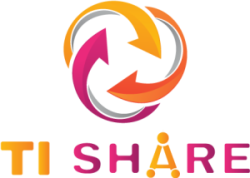If you’re in the process of looking for a new job, you’ve probably come across the term “applicant tracking system” (ATS). An ATS is a software application that helps businesses manage the recruitment process, from posting job openings to tracking applicants and storing employee data.
In this article, we’ll take a closer look at the best applicant tracking systems and how they can be used in human resources.
Why HR Should Use Applicant Tracking Systems
Applicant tracking systems are a great way to organize and filter candidates and prospects. They are used by over 90% of Fortune 500 companies and allow organizations to keep track of the information of each candidate, including the details of their education, work experience, and past employment history. These systems reduce the time it takes to fill positions and ensure that organizations are hiring the best possible candidates.
A key benefit of these systems is their ability to automate the application and screening process. Instead of contacting every candidate individually, an applicant tracking system can send automated emails to those who have been shortlisted. This eliminates the need to manually schedule interview dates and times.
How Applicant Tracking Systems Work
Applicant tracking systems are helpful tools that streamline the hiring process. They help companies sift through large volumes of resumes to identify candidates with the right qualifications. They also help HR departments screen and qualify candidates with a variety of soft skills. Unfortunately, 72% of HR departments report a lack of qualified candidates as a top challenge.
In the early days, applicant tracking systems were only used by a handful of large search firms that had big budgets and a dedicated IT department. But over the years, their use has grown. As the recruitment process has become more digital, ATS have become an essential tool for human resources departments. By 2022, most staffing firms will be using an ATS to manage their applicant pool.
Features of Applicant Tracking Systems
Applicant tracking systems help companies manage the entire hiring process from beginning to end. The system helps employees, recruiters, and hiring managers to access and update information about candidates. They also help companies track the progress of the applicant through the interview, evaluation, and hiring process. The best systems can also provide onboarding tools.
Hiring a new employee is time-consuming and exhausting, so companies should consider an applicant tracking system to streamline the hiring process and hire the best possible candidate. Advanced systems are designed to make the process faster and easier, sourcing candidates from the latest avenues. For example, 63% of candidates search for jobs using social media, so companies should make sure they are active on social media to get the best candidates. It’s also a good idea to integrate the applicant tracking system with sites like LinkedIN and Facebook.
Another feature to look for in an ATS is its ability to adapt to different departments. This feature will allow you to customize pre-screening questions and workflows. It should also be flexible enough to allow managers to customize the system to fit the needs of their departments.
Benefits of Applicant Tracking Systems
One of the main benefits of using an applicant tracking system (ATS) is the ability to streamline the hiring process. It can eliminate several steps that a recruiter or HR professional would need to take manually. It also allows you to integrate approval flows and custom hiring workflows. Furthermore, you’ll be able to see who’s available at any given time.
An applicant tracking system also allows multiple stakeholders to give feedback on candidates. Recruiters and hiring managers can collaborate easily, from their mobile devices. These systems use the latest technology to sort and screen resumes, including artificial intelligence and natural language processing. They also scan resumes to detect keywords.
Applicant Tracking Systems Summary
Using Applicant Tracking Systems (ATS) to track the application process and manage candidate experiences can be a great way to streamline talent management. In an increasingly competitive labor market, employers are seeking better ways to recruit top talent. According to a CareerBuilder survey, 40 percent of employees plan to switch jobs in 2018. This makes it essential for companies to hire the best candidates and organize the entire applicant process.
Applicant tracking systems help organizations select savefromnet the best candidates by using algorithms and filters. They use artificial intelligence and machine learning to evaluate candidates and predict their success. Additionally, these systems allow busy hiring managers and recruiters to collaborate with candidates from their mobile devices.
